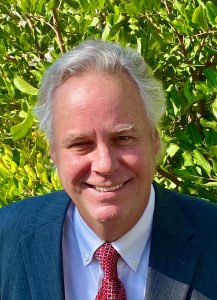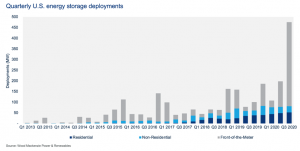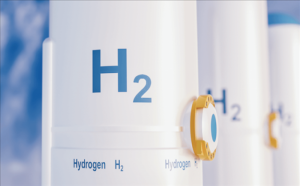December 19, 2020 – Volume 22, Issue 7
In This Issue
- Flanigan’s Eco-Logic: Microgrids 1.1: The Basics
- Virtual Power Plants
- Recycling Wind Turbine Blades
- United Kingdom to Outpace California
- Denmark Stops North Sea Oil Exploration
- Protecting the Arctic
- Nordic Harvest’s Vertical Farm
- Energy Storage Rising
- Smart Pressure Management
- Green Hydrogen Update

Flanigan’s Eco-Logic: Microgrids 1.1: The Basics
This brief is the first in a ten-part series on Microgrids.
There are a number of key and catchy words in the energy and environmental world in which I live…algorithms, net zero, parity, equity, resilience…microgrids. I love them all, especially the latter as a consultant in that new and daring space. We’re spearheading a project to develop 32 energy-resilient, solar + storage systems now for Southern California cities. If the grid goes down, a facility can still function.
Microgrids are a hot topic because they provide energy resilience. In Monterey County, EcoMotion worked for a school district that sought resilience to keep its students from wasting an educational minute. We found a cost-effective means to finance solar coverage for every campus, battery energy storage, and microgrid controls. Supported by wireless energy management capabilities, the microgrids are designed to operate indefinitely in a carbon-free mode during a prolonged outage. This case study will be presented later in this series.
But let’s get back to basics: What are microgrids? Literally…they are really small grids. Some of them serve islands or ships and are autonomous, while others are tied to the grid and spring into action when the grid goes down. We’re going to focus on the latter:
For the purposes of this discussion and series, microgrids are facilities or geographic areas that can “island” from the power system and operate in parallel with and independently of the power system. We’ve developed solar + storage microgrids. Between the two, and tight controls, the microgrids can be operational and autonomous. They can be carbon-free. And they can be financed.
Thomas Edison started pretty small at the Pearl Street Generating Station in the financial district of Manhattan in New York City in 1882. Edison Illuminating Company’s coal-fired power plant originally served 400 streetlights and 82 customers. It was actually a cogeneration plant as steam heating was providing to adjacent manufacturers and buildings. It was a small grid…a microgrid…served by a single power source.
Later the Edison companies got bigger and bigger, with not only local distribution but also long-distance transmission tying in generators far away. As centralization of power generation occurred, gone was its cogeneration, and gone was resiliency. Unplanned outages cause widespread disruption. While tapping the economies of scale for power generation, the central systems that we largely rely on today in America fundamentally lack the resilience that lots of small systems create.
So back to microgrids and addressing today’s realities. Microgrids can augment and shore up the power system by being able to operate and provide power to critical loads. In the event of an emergency, they can provide for refrigeration, medical equipment, or IT systems and communication.
Many hospitals, police and fire stations are already energy resilient. They have generators – typically gas-fired or diesel – that operate only when the grid goes down. New age microgrids have day jobs. They can generate savings during normal times and serve highly valued resiliency during outages.
During Superstorm Sandy, there were few pockets of light in and around New York City. One such pocket of light was Coop City, a housing development in the Bronx. Its power plant is configured to run in sync with the grid in normal times, and to be able to generate on its own during outages. Normally, ConEd buys excess power from Coop City, but during the superstorm, it was fully functional in islanded mode. This case study of a money-making, quite large-scale microgrid will be presented later too.
A colleague that I admire, Peter Asmus of Navigant Research, stated the other day to me that the current state of microgrids is pretty clear: Everyone wants one. This is especially so in California where PSPS (Public Safety Power Shut-offs) events are wreaking havoc on homes and businesses. Imagine your utility telling you that they are shutting down for the next several days due to extreme conditions…so sorry. Really, this is a sorry state of affairs. Can carbon-free microgrids be designed so that they pay for themselves, and cover you when the grid goes down, planned or unplanned?
The next issue of this series will be “Microgrids 1.2: Microgrid Components.”
Quote of the Week
“We have proven we can reduce our emissions and create hundreds of thousands of jobs in the process. We are taking the lead with an ambitious new target to reduce our emissions by 2030, faster than any major economy.”
Boris Johnson, Prime MinisterThe United Kingdom
Virtual Power Plants

Photo Credit: Dennis Schroeder, NREL
Some years ago my colleagues and I were excited about “Residential Conservation Power Plants.” What a nega-watt thought: Instead of building a conventional power plant, invest in efficiency in x number of homes…in aggregate enough to offset the need for the plant.
While California’s energy efficiency gains are an extraordinarily good story – with many Rosenfelds in achievement (1R = 500 MW power plant) – the residential conservation power plant notion seems to have faded. But not its value: Without fanfare or fancy name, many utilities have controlled consumers’ hot water heaters remotely for decades, resulting in the same effect…offsetting the need for peak power plants.
Today, there’s a new form of power plant…the Virtual Power Plant. Some “VPPs” are conservation based, others based on solar + storage. The idea is the same: Pull together small actions at the household level that turn in to a significant action in aggregate. Whether it’s calling on energy conservation, or discharging batteries, from a utility standpoint the effect is like a peak power plant. The key is how to do it cost-effectively. Can the virtual power plant cost less than the peak plant while cutting CO2 emissions? That’s the goal.
OhmConnect is run by my long-time colleague and friend Cisco Devries. It’s a company that is aggregating consumers into virtual power plants, temporarily reducing households’ power consumption when the utility needs relief. Cisco speaks of California’s need for 10 – 15 GW of “flexible demand.”
In 2016, OhmConnect was awarded a $4 million grant from California Energy Commission to develop its concept of flexible demand and “OhmHours.” During these brief periods participants are paid to use less electricity. This is made possible because OhmConnect has traders that sell blocks of power at peak periods just like an independent power plant does. At the household level, smart meter data can track predicted use compared to actual use net of conservation. Those are OhmHours for which customers get payments.
OhmConnect has developed a network of 16,000 homes in Alameda County. When called upon, these homes cut their loads thanks to preprogrammed smart devices such as thermostats, hot water heater controls, lighting, and electronics. Participants get base and bonus points, and status levels for consistent behavior. The average account holder gets $300 – 500 a year and can cash out with PayPal.
The system has been proven: Between August 13 – 20, 2020, OhnConnect was able to reduce energy usage in its network of homes by nearly 1 GWh, and it compensated its customers $1 million to do so. It also is proud to state that 40% of its customers in Alameda County are low and moderate-income customers.
Now OhmConnect is leading a push to create 550 MW of flexible demand in California. The company already has a base of 150,000 customers fitted with smart devices to control 100 MW of flexible demand. Now OhmConnect, backed with $100 million to provide free controllable devices to participants, and to build out its software platform, is partnering with Sidewalk Infrastructure Partners. Together they plan to build a 550 MW Resi-Station that will control homeowners’ devices and their solar and storage assets to provide clean power in California via aggregated flexible demand.
Glendale Water and Power, in Glendale, California, is a municipal utility taking a big step and rolling out a ~$240 million virtual power plant program based on solar and storage. Through a Power Purchase Agreement with SunRun, GWP will purchase the solar power, the RECs, and the battery storage for systems installed in 3,000 – 4,000 customers and 30 – 40 multifamily apartment buildings. In aggregate, the virtual power plant has been approved by Council to provide 28 MW of capacity and 25.5 MWh of two-hour, solar-powered battery storage to the GWP system.
At no cost, participants will host solar and storage systems that will benefit the city and its municipal utility, and for which they will receive payments. Homeowners not only contribute to the City’s push to carbon neutrality, but they also get back up power in the event of an outage. And they get paid. The average annual income for participating is $200.
Swell Energy is another strong VPP provider. It touts “Independence from power outages!” Swell has created a VPP Financing Vehicle to support $450 million of capital investment in its nationwide Virtual Power Plant portfolio. It has two offerings: First, homeowners can buy or finance a system from Swell that couples solar and storage that will generate savings and provide for resiliency in the event of a grid outage.
Second, Swell is working with utilities on its Protect Your Planet program that provides both household and utility benefits. Participants get a $1,000 discount on their battery storage system and earn GridRevenues when the batteries are called upon by the local utility. In the meantime, they use their batteries to provide daily savings and have complete use of the batteries in a grid outage.
Swell has announced plans to finance the construction of four virtual power plants, representing over 200 MWh of distributed energy storage paired with 100 MW of solar PV capacity. For this project, Swell has been commissioned by utilities in three states to construct and aggregate ~14,000 solar energy generation and storage systems.
Recycling Wind Turbine Blades

Photo Credit: Veolia North America
Made largely of fiberglass and resins, wind turbine blades to date have had little recycling value. As such, wind operators have landfilled them. A General Electric official noted that, “The sustainable disposal of composites such as wind turbine blades has been a challenge, not only for the wind industry, but also for the aerospace, maritime, automotive, and construction industries.”
In mid 2019, a company named Veolia completed a trial of its recycling method for a single blade; it then processed another 100+ blades to flex its system. GE Renewable Energy has now contracted with Veolia North America to recycle blades from its U.S.-based, on-shore wind turbines during upgrades and repowering projects. Veolia will process the blades as a raw material for cement, using cement kiln co-processing technology. Compared to traditional cement production, blade recycling enables a 27% net reduction in CO2 emissions and a 13% net reduced water consumption.
Through this deal with GE, the blades will be shredded in Missouri and then used as a replacement for coal, sand, and clay at cement manufacturing facilities across the United States. Similar processes have proven effective in Europe. Through this process, 90% of the blades by weight will be recycled replacing the use of raw materials that would have otherwise been added to the kiln to create cement. According to GE, “Reuse of the blades in this way has a net positive environmental impact…” a circular economy for composite materials.
A single 1.5 MW wind turbine blade is about 120 feet long and weighs 11,500 pounds; a 3 MW wind turbine blade is 155 feet long and weighs 27,000 pounds. Based on a 15,000-pound blade, use of that blade for cement production eliminates the need for cement kiln consuming nearly 11,000 pounds of coal, 6,000 pounds of silica, 4,000 pounds of limestone, and nearly a 2,200 pounds of additional mineral-based raw materials.
United Kingdom to Outpace California
 Prime Minister Boris Johnson has recently proclaimed that the United Kingdom will cut its greenhouse gas emissions further and faster than any other major economy in the next decade, outpacing California. The U.K.’s new target reduction will be 68% in annual carbon emissions by 2030 compared to 1990 levels, a significant increase from the 57% previous target. In California, ten years after the infamous AB 32 Global Warming Solutions Act, SB ratcheted up the GHG reduction target to 40% below 1990 levels by 2030.
Prime Minister Boris Johnson has recently proclaimed that the United Kingdom will cut its greenhouse gas emissions further and faster than any other major economy in the next decade, outpacing California. The U.K.’s new target reduction will be 68% in annual carbon emissions by 2030 compared to 1990 levels, a significant increase from the 57% previous target. In California, ten years after the infamous AB 32 Global Warming Solutions Act, SB ratcheted up the GHG reduction target to 40% below 1990 levels by 2030.
The Prime Minister’s announcement, just days before he was slated to co-host a virtual planning meeting for COP26, is intended to galvanize other nations to follow suit. The U.K. will host in COP26 – the United Nations’ 26th annual Conference of Parties addressing global climate change – in Glasgow in November 2021.
Countries that signed on to the Paris Agreement pledged to set NDCs – Nationally Declared Contributions. Countries are responsible for setting their own NDCs, specific plans to cut emissions. The U.K. announcement was in part spurred by the finding by the U.K.’s Committee on Climate Change that the costs of cutting emissions has fallen rapidly in the past few years.
Denmark Stops North Sea Oil Exploration
Since the 1970s, and despite its cutting-edge climate protection policies and action, Denmark, has been earning billions of dollars in revenues from pumping North Sea oil. It is currently the European Union’s largest oil producer, a distinction made possible by Brexit and the fact that Norway is not a member of the EU. Now Denmark has taken “the landmark step” of announcing that it will end all new oil and gas exploration in the North Sea.
The oil industry response to a recent tender – the country’s eight licensing round of new exploration rights in the North Sea issued by the Danish government – was tepid, partially due to low oil prices and the North Sea’s high costs of extraction. After the lackluster industry response, the government canceled the solicitation as well as all future explorations.
The move was praised by Greenpeace Denmark. The country has been producing 103,00 barrels a day in 2019, with 55 drilling platforms in its territory, across 20 oil and gas fields. Danish officials are now urging the United Kingdom to follow suit, suggesting that to be credible in the climate space that North Sea exploration has to stop.
Protecting the Arctic
 TD Bank – Toronto Dominion Bank – announced that it will no longer fund oil and gas related activities in the Arctic Circle. It is joining a number of major global lenders in taking similar action to protect the Arctic’s fragile ecosystem by cutting off funding for environmentally detrimental projects. Goldman Sachs, JPMorgan Chase, Wells Fargo, Citigroup, and Morgan Stanley have all committed to ending fossil-fuel financing in the Arctic.
TD Bank – Toronto Dominion Bank – announced that it will no longer fund oil and gas related activities in the Arctic Circle. It is joining a number of major global lenders in taking similar action to protect the Arctic’s fragile ecosystem by cutting off funding for environmentally detrimental projects. Goldman Sachs, JPMorgan Chase, Wells Fargo, Citigroup, and Morgan Stanley have all committed to ending fossil-fuel financing in the Arctic.
The Toronto-based TD Bank stated in its official announcement that the Arctic Circle is warming faster than the rest of the planet, which in turn poses the risk of increased greenhouse gas releases and further warming. Last month, Canada’s biggest lender – Royal Bank of Canada – became the first Canadian bank to say it will not directly finance exploration or developing in the Arctic National Wildlife Refuge. It also put limits on financing for clients with significant coal-mining operations.
Nordic Harvest’s Vertical Farm

Photo Credit: Nordic Harvest
Vertical farming is spreading all over the world…from Singapore to the United Kingdom. A Danish company named Nordic Harvest has now developed Europe’s largest, indoor vertical farm. It is located in Taastrup just outside Copenhagen.
The farm will be completely wind powered so that it is carbon neutral. Nordic Harvest will grow its greens in stacks 14 high, that will be harvested 15 times a year, with the result being the distribution of 1,000 tonnes of fresh basil, mint, cilantro, oregano, baby spinach, arugula, napolitana, and parsley within Denmark each year.
As a society, Nordic Harvest points out, we are used to blueberries in February, Oranges in July, and fresh vegetables of all kinds year round. But this takes a lot of resources to deliver. Much of our food is energy and water intensive, not to mention the fertilizers, pesticides, etc. used in food production. Then our food is flown or shipped hundreds if not thousands of miles.
In stark contrast, vertical farming – urban farming – grows food right where it is consumed in an incredibly efficient way. Right now, Denmark imports 70% of its salads and herbs. If food were grown ala Taastrup in a space equaling 20 soccer “pitches,” the country would grow 100% of its needs, locally and in controlled environments.
Vertical farming makes a lot of sense in dense urban areas; plants grow in racks to maximize interior space, and fresh vegetables are grown close to where they are eaten. Taastrup uses technology from the Taiwanese vertical farming company called YesHealth Group. It takes automation to the next level. Sensors combined with software monitor and process more than 5,000 data points…for instance the lighting intensity needed for growth of plants at various stages of their development, while robots on wheels deliver trays of seeds from aisle to aisle, and stack level to the next throughout the warehouse farm.
Nordic Harvest’s futuristic farm uses 20,000 specialized and highly efficient LED lamps to provide the plants with specific amounts and qualities of light. Water is used most judiciously with a design goal of one liter of water per kilogram of produce, claimed to be 250 times less than traditional agriculture. Rather than being watered, the plants grow in trays that allow their roots to extend into shallow troughs of nutrient-rich water.
Hydroponic cultivation and vertical farming often use artificial fertilizers. Nordic Harvest, along with YesHealth, have developed a new form of biological fertilizers. It is produced by fermenting plant residues with natural bacteria in large tanks into a concentrated cocktail which is then heated and concentrated further before natural minerals are added. The mixture is subsequently diluted and dosed to the plants. This production is being designed into the new farm at Gronttorvet in Taastrup.
Energy Storage Rising
The third quarter of 2020 set record energy storage installations, 240% above the previous quarter. Fully 476 MW of storage resources were deployed in the United States in this quarter, and despite the pandemic, according to a report from Wood Mackenzie and the U.S. Energy Storage Association (ESA).

Graphic Credit: Wood Mackenzie
In Q3 99% of the storage installed was lithium-ion. Most of the growth was front of meter (400 MW/578 MWh). California, New Jersey, and Arkansas led the nation in terms of front-of-meter installations.
Residential storage market amounted to 52 MW and 119 MWh of in the third quarter of 2020, continuing a six-quarter growth trend. The report finds that residential storage is poised to expand six-fold in the next five years, particularly in New York, Massachusetts, and the PJM power pool.
By 2025, the report finds, the domestic battery energy storage market is expected to grow by a factor of six to a total of nearly 7.5 GW, with a $7.3 billion annual market. The growth will predominantly be due to large-scale utility procurements, most paired with solar.
Smart Pressure Management
 InPipe is a company that harvests excess pressure in municipal water systems. Excess pressure and deferred maintenance are common themes in municipal water systems. The former exacerbates the latter. There are 240,000 U.S. water main breaks each year, according to the American Society of Civil Engineers, resulting in more than 2 trillion gallons of lost drinking water annually.
InPipe is a company that harvests excess pressure in municipal water systems. Excess pressure and deferred maintenance are common themes in municipal water systems. The former exacerbates the latter. There are 240,000 U.S. water main breaks each year, according to the American Society of Civil Engineers, resulting in more than 2 trillion gallons of lost drinking water annually.
Sophisticated monitoring of water main pressures and having means to relieve it cost effectively is valuable. Saved energy and dollars from InPipe system can be used to target and to begin to address deferred maintenance. Its founders say that it’s all about, “monetizing water pressure, reducing leaks and pipe damage, and generating clean energy in the process.”
InPipe uses sensors to monitor precise flow and pressure within municipal water pipes. Then it augments existing pressure control valves with a bypass system. Excess water pressure is relieved by diverting water through a small pipe where it spins a turbine. The water then flows back into the main pipe.
InPipe now has a partnership is with City of Hillsborough, Oregon. Its pilot project is funded by both Portland General Electric and The Energy Trust of Oregon. It is expected to generate 185,000 to 200,000 kWh a year and will be used to power Hillsborough Stadium’s lighting and electric vehicle charging stations.
Green Hydrogen Update
 Developments in the green hydrogen space continue to be impressive. Reuters reports that a consortium of large companies has signed on to the United Nations Green Hydrogen Catapult Initiative. The project is part of the U.N. Race to Zero, an initiative urging companies to commit to environmental action outside of government frameworks. Its goal is to halve the cost of green hydrogen (which is now around $4/kgH2) to below $2/kG and to add 25 GW of capacity by 2026, fifty times more green hydrogen than is being currently produced.
Developments in the green hydrogen space continue to be impressive. Reuters reports that a consortium of large companies has signed on to the United Nations Green Hydrogen Catapult Initiative. The project is part of the U.N. Race to Zero, an initiative urging companies to commit to environmental action outside of government frameworks. Its goal is to halve the cost of green hydrogen (which is now around $4/kgH2) to below $2/kG and to add 25 GW of capacity by 2026, fifty times more green hydrogen than is being currently produced.
A Hydrogen Industry study stated that $2 is the tipping point for green hydrogen to be competitive with other fuels. Spanish utility Iberdrola, Danish renewable energy developer Orsted, ACWA Power from Saudi Arabia, Italian gas group Snam, renewable energy investor CWP Renewables from Australia, Chinese wind turbine manufacturers Envision, and fertilizer company Yara International are vested in the $110 billion, six-year project.
The U.N. project is one of several major initiatives to promote green hydrogen worldwide. There are efforts underway to develop the hydrogen supply chain in Europe, in Japan, and in Saudi Arabia. Norwegian Equinor joined NortH2 to develop green hydrogen supply network for northwest Europe. Led by Shell, NortH2 aims to produce 100 million tonnes of hydrogen using 10 GW of offshore wind by 2030.
